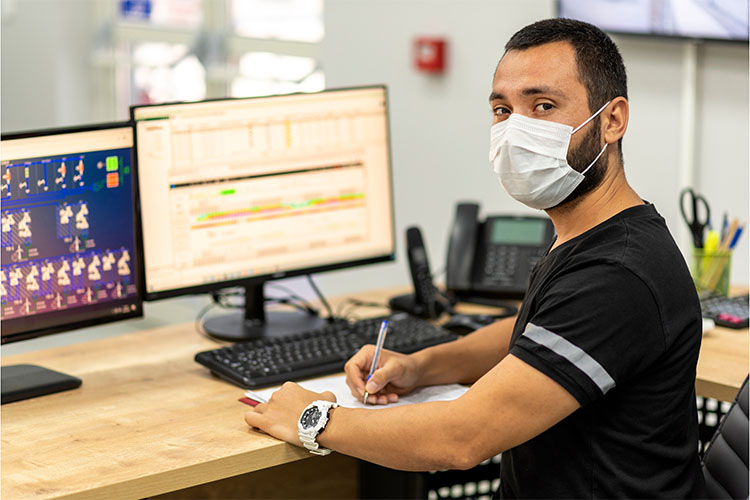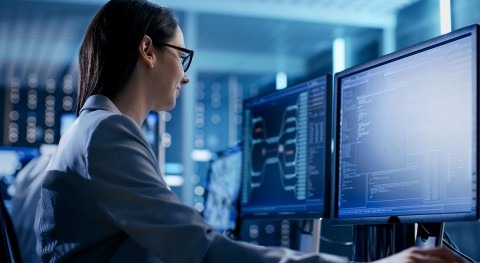Every day, hundreds of millions of people around the world access water produced by desalination plants. As the only climate-independent source of water, an increasing number of water scarce regions rely on desalination to deliver water in the right place, at the right time.
Every day, millions of articles about artificial intelligence are written, read or shared. Many contain great ideas, concepts, and theories; however, more could feature real-world applications or results. The aim of this article is to share practical information about the application of artificial intelligence in the water industry. Specifically, it covers the opportunities to optimize energy use in desalination using a subset of artificial intelligence: machine learning.
Why use machine learning?
Before understanding why machine learning is the right solution, we need to understand the problem.
We know the heart of the desalination process, reverse osmosis (RO), requires a lot of energy to produce water, and costs plant owners and operators millions of dollars every year. Optimizing a plant manually, to match the design conditions, takes time that operators and control room operators do not always have. Rightly, we’re yet to meet an operator who prioritizes lengthy optimization calculations over managing daily alarms.
Further, when optimizing multiple RO trains, it’s impossible for humans to calculate the optimal flow balance at a frequency that would deliver the most energy savings. For example, if a person used Microsoft Excel to do the same calculations, it could take a whole week to calculate savings for one train, so you can imagine the complexity of 20 or more.
Optimizing a plant manually, to match the design conditions, takes time that operators and control room operators do not always have
The physical material of RO membranes also has complicated properties that are not easily observable, and the RO process itself has pieces that cannot be measured precisely mathematically during operations. To optimize RO, where standard mathematics has limitations, machine learning is accurate.
Machine learning can also be codified and deployed to systems like SCADA to predict variations/trends in water temperature and salinity and undertake multiple setpoint changes per day, ultimately minimizing energy use and adapting to consistently fluctuating feedwater conditions. Software can be designed to account for multiple inputs and output parameters, ensuring each plant’s design standards and mechanical limitations are met.
Excitingly, multi-train optimization can simulate multiple trains of RO racks, while approximating the properties of the plant that are difficult to model mathematically. The simulation, combined with machine learning, finds states that reflect the best ways to meet KPIs of a particular plant. This is an exciting area for desalination, which can add further efficiency than industry-standard operations.
Machine learning in action

Synauta is a cleantech startup founded in 2018 that is already collaborating with desalination innovators in Europe, Australia, the Middle East and Canada. These companies, together with supporters including Sustainable Development Technologies Canada and Alberta Innovates, share the goal of reducing energy and chemical use in desalination.
Last month Synauta released a case study showing machine learning energy optimization for RO. By manipulating plant recovery based on three set points, up to 18% instantaneous energy savings could be made with an average saving of 9.7% over six months.
Without the application of machine learning to optimize operations, greater amounts of energy and chemicals will needlessly be wasted
The case study features a desalination plant in regional Western Australia operated by Osmoflo. The plant has a typical seawater RO arrangement, with an isobaric energy recovery device. The plant has 4 trains, each capable of producing 1,000 m3/day. The trains have 14 vessels and 6 membrane elements in each. Elements are 6,000 GPD flux and 99.7% rejection sourced from a major RO membrane manufacturer.
For this particular plant size (4,000 m3/day), the OPEX saving would amount to $65,000 every year. For a 300,000 m3/day municipal seawater RO plant, optimizing energy use can save more than $3 million every year. This is based on a 10% energy saving, $0.15 kWh and 2.5 kWh/m3.
In other examples, the OPEX savings machine learning offers – purely in reducing energy – could be in the realm of $15 million every year across Australia’s Big 6 desalination plants, or more than $3.5 million per annum for a mega-plant like Tahweelah.
Keeping it simple and enabling people
One of the potential hurdles to embracing new technologies is the perception that you always need new hardware, new skills or training, or completely new systems. This does not have to be the case. In the Synauta and Osmoflo trial, operators could confidently optimize the plant in a matter of seconds, based on three set points emailed daily (high-pressure pump flow, PX booster pump flow and PX valve to drain).
To validate the energy savings for Osmoflo, Synauta created a metric called normalized energy use, which accounts for temperature and salinity variation and is adjusted to standard seawater test conditions (25 °C, 32,000 ppm NaCl).
Synauta is a cleantech startup that is collaborating with desalination innovators in Europe, Australia, the Middle East and Canada
When it comes to innovation or any project for that matter, keeping things simple enhances the effectiveness of communication for the people involved. To support this, Synauta takes a phased approach to implementation. This enables focused periods to understand the potential savings (historical data audit), refine data and address the nuances or constraints of individual plants, and deliver set points while monitoring savings.
For optimal savings the software can be integrated with a plant’s SCADA or DCS system; however, this does not imply a plant operator would become powerless to change the plant operating parameters. The operator still has the power to take over operation of the plant. In such cases when they do require control, we work with the operator to understand why and invite their advice to adjust the algorithm to suit.
A responsibility to deliver environmental benefits

The advantage of working in the water industry is that we’re constantly reminded of the fragility and interconnectedness of the environment to our quality of life and opportunities for prosperity. As climate change exacerbates water scarcity challenges for communities and entire regions, we have a responsibility to deliver water in a way that also reduces the carbon footprint. While progress has been made in areas like renewables for powering plants, or Energy Recovery Inc devices, optimizing operations using machine learning presents additional opportunities.
A hurdle to embracing new technologies is the perception that you need new hardware, new skills or training, or completely new systems
Without the application of machine learning to optimize operations, greater amounts of energy and chemicals will needlessly be wasted. Through saving energy, less CO2 is emitted from the associated local power plant, as well as less particulate matter, NOX, SOX and VOCs. On a chemical savings side, this could mean undertaking only nine cleanings on a plant per year, rather than 12. By undertaking fewer cleanings, less chemical is used. For example, 10-15% less chemical could be used, saving significant OPEX costs as well as mitigating the embedded CO2e, Nitrogen and Phosphorus in the cleaning chemicals.
For the desalination industry, purely optimizing seawater RO plants to save energy, it’s estimated machine learning can save up to 12 million tonnes of CO2e per year (Synauta Environmental Benefits Quantification Report, GHD, 2020).
Focusing on strengths
Some articles on artificial intelligence are good at one thing: creating an expectation that we will all lose our jobs tomorrow and robots will take over. While such concepts can make entertaining movies, focusing on these narratives in the water industry is an unhelpful distraction.
If you’re new to the concept of artificial intelligence or work in the area every day, we all benefit from a commitment to educating ourselves, maintaining a growth mindset and curiosity. By sharing projects and results, we can stay focused on how to apply artificial intelligence’s strengths to solve real-world problems today.
The technologies are ready, they are being proven and it’s time to normalize them as part of the water business, to realize the enormous environmental, economic and social benefits on offer.






